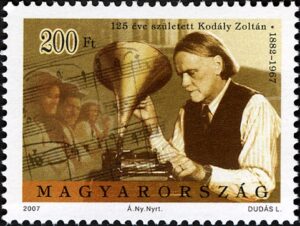Kodály, Sonata for Solo Cello, Op. 8 (3rd movement)
 Fasten your seat belt. The cellist on the video that follows takes a deep breath at the beginning for a reason. It’s easy sometimes to forget about the physicality of playing an instrument (or singing at a volume that fills a concert hall without amplification). This finale of the Kodály Sonata for Solo Cello ranks as one of the most challenging virtuosic pieces for cello.
Fasten your seat belt. The cellist on the video that follows takes a deep breath at the beginning for a reason. It’s easy sometimes to forget about the physicality of playing an instrument (or singing at a volume that fills a concert hall without amplification). This finale of the Kodály Sonata for Solo Cello ranks as one of the most challenging virtuosic pieces for cello.
Last week we looked at one of the Bach unaccompanied suites for cello. We don’t find a steady stream of works for solo cello in the years that follow Bach. By one account, Kodály’s sonata is the “first” to appear after Bach except for those of Max Reger. (Where I come from, they call that “second.”) Reger wrote three unaccompanied cello suites in 1915, the same year that Kodály completed this work. Its premiere was delayed until 1918 due to the First World War.
In 1908, Zoltan Kodály (1882-1967) trekked through the mountains of Hungary with his friend Béla Bartók to make gramophone recordings of folksongs in remote villages. He wrote his doctoral dissertation on “The Strophic Structure of Hungarian Folk-Songs.” Both he and Bartók would incorporate much of the Hungarian folk styles into their music. The entire sonata featured here is filled with the sound and rhythms of Hungarian folk tunes. That sound is emphasized somewhat by altering the tuning of the cello, what is called scordatura (literally mistuning), to take the lowest two strings down a half step.
Kodály also played a key role in the development of music education. The “Kodály Method” for teaching music to school children is based on his principles, and it remains in widespread use today.




Is he really playing that fast? Wow! Amazing talent. My kids enjoyed this.